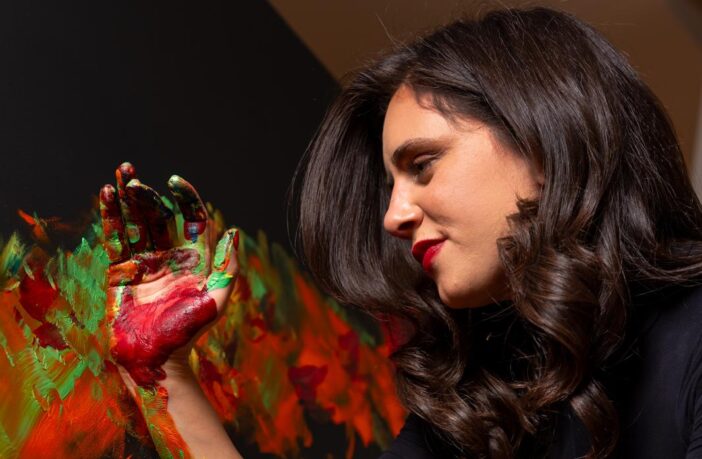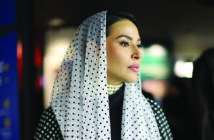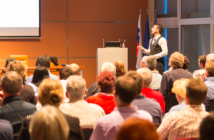In recent years, Saudi Arabia’s art landscape has undergone a remarkable transformation. Once considered a relatively closed space, the Kingdom is now witnessing a cultural awakening—marked by government support, new institutions, and a growing number of exhibitions, residencies, and public art initiatives. Riyadh, the capital, has become a vibrant hub for contemporary art, drawing the attention of both local and international creatives. Among those contributing to this momentum are expatriate artists—individuals from around the world who have made Saudi Arabia their home and are now finding meaningful ways to engage with its evolving creative landscape.
Despite the unique challenges of navigating a new culture, language, and art infrastructure, expat artists in Riyadh are steadily carving out space for themselves. Whether through solo exhibitions, collaborative projects, or community-led initiatives, they are enriching the scene with diverse perspectives and practices. Their work not only reflects their own cultural backgrounds but also responds to the textures, traditions, and rapid transformations of Saudi life. As boundaries continue to shift and new opportunities emerge, expat artists are not just participating in the Saudi art movement—they’re helping to shape it.
Aida Murad
Jordan and USA
Aida Murad’s art is all about energy—specifically, generating good energy. She creates abstract works designed to uplift spaces and people with joy, clarity, and hope. Her creative process is deeply emotional and intuitive, rooted in the belief that art can transform how people feel.
Although she began painting 11 years ago, it feels like a lifelong calling. Formerly an economist and strategist, she turned to art after experiencing a health trauma. What began as a healing tool eventually became her purpose: to uplift others and inspire them to embrace a more joyous, expansive life. Over time, her practice evolved from self-expression into a gift she offers to the world.
Living and working in Riyadh has profoundly shaped her artistic identity. For the first time in years, she felt a deep sense of belonging. The kindness and generosity of the people gave her the emotional safety and courage to create freely. That nurturing environment led to a prolific year—she produced 70 paintings in just twelve months. Both her technique and emotional expression deepened significantly as a result.
Culturally, she brings a rich mix of Jordanian, Palestinian, American, and Turkish roots. But rather than blending distinct cultures, her art is guided by universal values—presence, love, and community. Since childhood, she has felt connected to everyone, confused by divisions between “us” and “them.” Her work reflects that worldview: one rooted in shared human experience, rather than geographic or cultural boundaries.
Being an expat artist in Saudi Arabia brings both excitement and challenge. While her outsider perspective adds something fresh to the local scene, structural barriers still exist. Many opportunities are reserved for Saudi nationals, and mid-career expat artists often lack institutional support. In contrast to cities like New York, where diversity drives the art ecosystem, she sees the need for a more balanced approach in Riyadh—one that includes and empowers both Saudi and expat creators. She’s also faced practical challenges, such as the high cost of art materials and limited exhibition infrastructure.
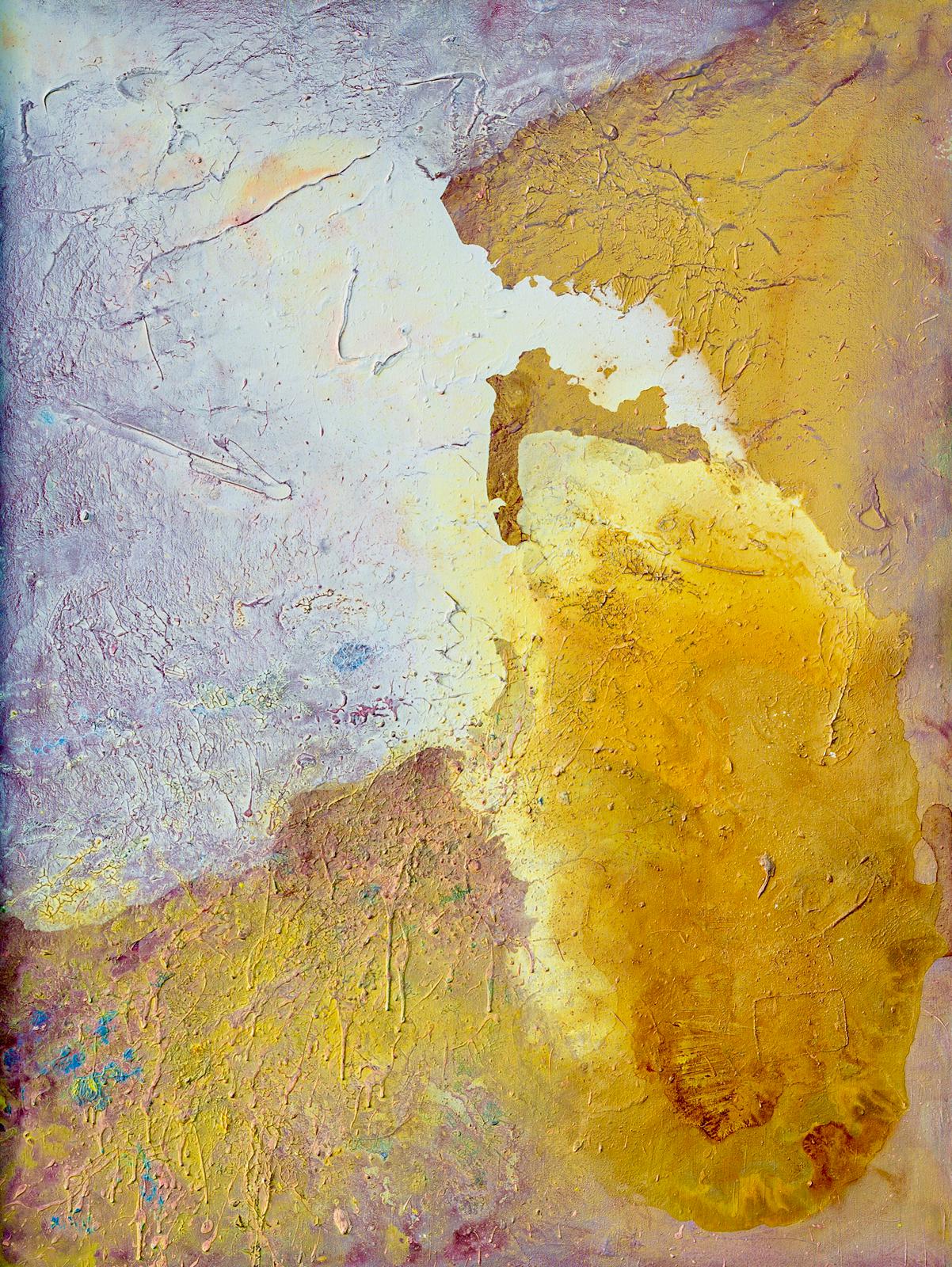
Despite this, she has forged meaningful collaborations. A standout moment has been her partnership with the U.S. Embassy in Riyadh, which will host her solo exhibition in May 2025. The show will interpret 13 iconic American songs through visual art, serving as a cultural bridge between the U.S. and Saudi Arabia. She was also the first artist to exhibit at both the St. Regis Riyadh and the Ritz-Carlton Riyadh, and her work was featured at the Forbes Women’s Summit.
One of her most beloved pieces, Caramel Goldenness, could only have been created in Riyadh. The painting reflects the spirit of the city’s people—majestic, grounded, and generous—expressed through tones of white and gold. Uniquely, it was created by immersing the canvas in water over several days and painting entirely with her fingers.
Her advice to fellow expat artists? Collaborate with local creatives, connect with embassies, and attend art events—but avoid burnout. Most importantly, define your artistic identity with clarity. The more clearly you communicate your purpose, the easier it is for the right opportunities to find you. Support is available—if you know where to look and what aligns with your journey.
Aisha Yun
China
Aisha Yun is a prominent figure in China–Saudi Arabia cultural and artistic exchange. She serves as President of the China–Saudi Arabia Culture & Art Association and holds several influential roles, including founder of the Saudi Yun Culture and Art Center and President of the China International Calligraphy and Painting University (Saudi Arabia Branch).
A graduate of the prestigious Nanjing University of the Arts in China, Aisha began her artistic journey at the age of 14, sketching flowers outside her home. Over time, her passion evolved into a mastery of painting, portraiture, and sculpture. Since relocating to Saudi Arabia in 2008, she has become a vital voice in the Kingdom’s art scene, with her work featured in over 50 exhibitions across Saudi Arabia, the UAE, Jordan, the UK, Brazil, and beyond.
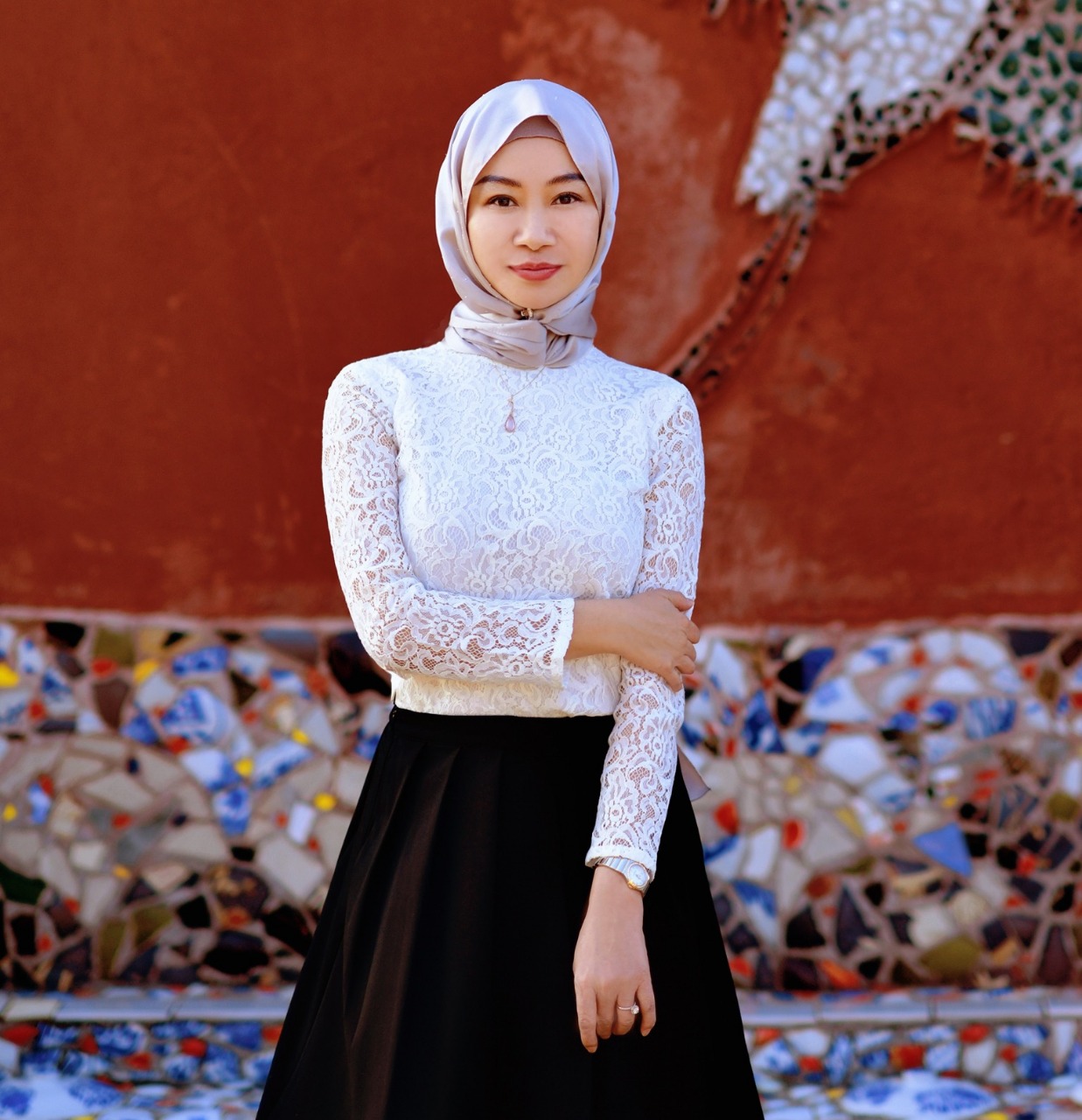
Notable milestones include a solo exhibit at the French Embassy in Riyadh in 2009 and her acclaimed Floral Language exhibition at the Saudi National Museum in 2010, held in celebration of 20 years of diplomatic ties between China and Saudi Arabia. Her artwork reflects a unique fusion of her Chinese heritage and the culture of her current home in Saudi Arabia.
Aisha is an active member of the Saudi Art Association and has long been involved in the local arts community. She describes the Saudi people as warm and welcoming, and she feels embraced as a sister in a society that holds a deep appreciation for art and creativity. This mutual respect has been reinforced by the ongoing support of the Chinese Embassy in Saudi Arabia and the Saudi Ministry of Culture—especially meaningful as Saudi Arabia designates 2025 as the Year of Chinese Culture.

One of her most memorable works is Abha in the Summer Afternoon, an oil painting that captures the luminous beauty of traditional Saudi buildings under the intense summer sun. The mysterious shadows of small windows contrast with the open warmth of the Saudi spirit—an image that embodies her experience as an artist living between cultures.
For 17 years, Aisha has been a tireless advocate for cultural collaboration, leading numerous government and grassroots initiatives that promote understanding and friendship between China and Saudi Arabia. Through her art, she continues to build bridges between these two rich and dynamic cultures.
Elain Omeish
Jordan
Elain Omeish began her artistic journey with a childhood fascination for colors and shapes. Over time, this passion grew into a disciplined self-taught practice, exploring various media and techniques. Mosaic art, in particular, captivated her—its ability to turn small fragments into unified, meaningful works deeply resonated with her. What started as a hobby evolved into a powerful form of self-expression, connection, and everyday beauty.
Her art often reflects the wonder of nature. She aims to recreate the feeling of discovering something extraordinary—like cracking open a geode—through patterns and motifs that balance simplicity with complexity, and harmony with tension. Her works explore philosophical contrasts: simplicity amidst complication, harmony amidst conflict, and order amidst chaos. Her patterns and motifs help her achieve this.
Living in Saudi Arabia for 6 years has significantly influenced her artistic style. Inspired by the country’s vibrant culture, rich heritage, and ornate patterns, she incorporates elements of local art and architecture into her mosaics. At the same time, as a Jordanian expat, her creations also reflect a fusion of her roots and current surroundings—an interplay of identity, culture, and environment that gives her art both a personal and universal quality.
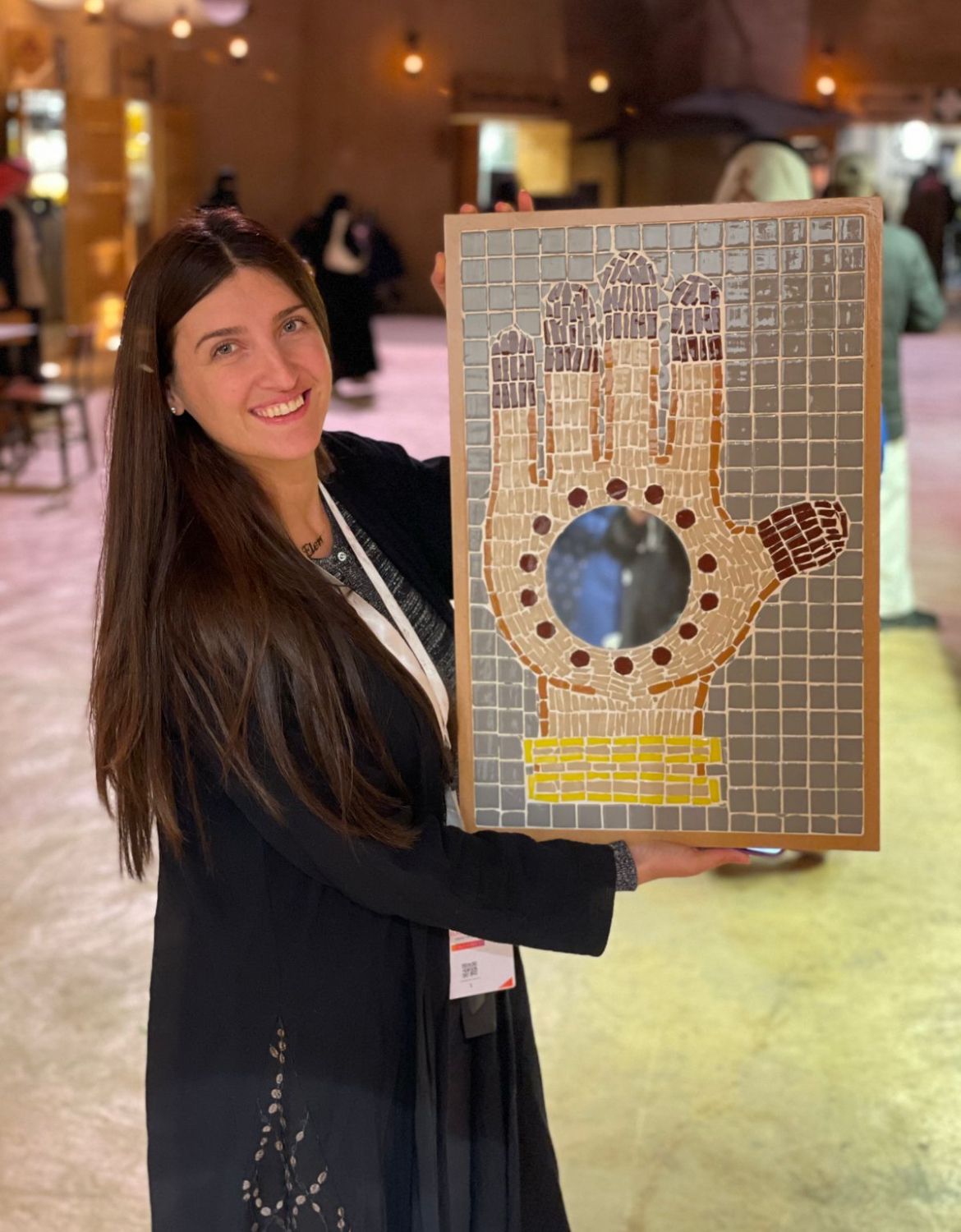
She values collaboration and encourages emerging artists to participate in Riyadh’s growing art community through festivals, exhibitions, and creative partnerships. One of her most treasured mosaic works, Ardah, is a mosaic that embodies this cultural blend—celebrating the traditions of her adopted home through her unique artistic skill.
Elain’s journey as an artist is a testament to the power of passion, cultural fusion, and continuous growth. Through her mosaics, she not only celebrates the beauty of her surroundings but also bridges traditions, telling stories that resonate across borders.
Kulsoom Kahkashan
India
Kulsoom Kahkashan was born in India but has spent her entire life—34 years and counting—in Saudi Arabia. While she holds a degree in science, her creative spirit led her down a different path. Drawn to the world of art, she began exploring various mediums including doodling, calligraphy, portrait sketching, fashion illustration, and scrapbooking. Over the years, she developed a signature style that blends mixed media and abstract elements—characterized by detailed hand designs, bold strokes, and the thoughtful use of recycled materials, acrylics, and textured layers.
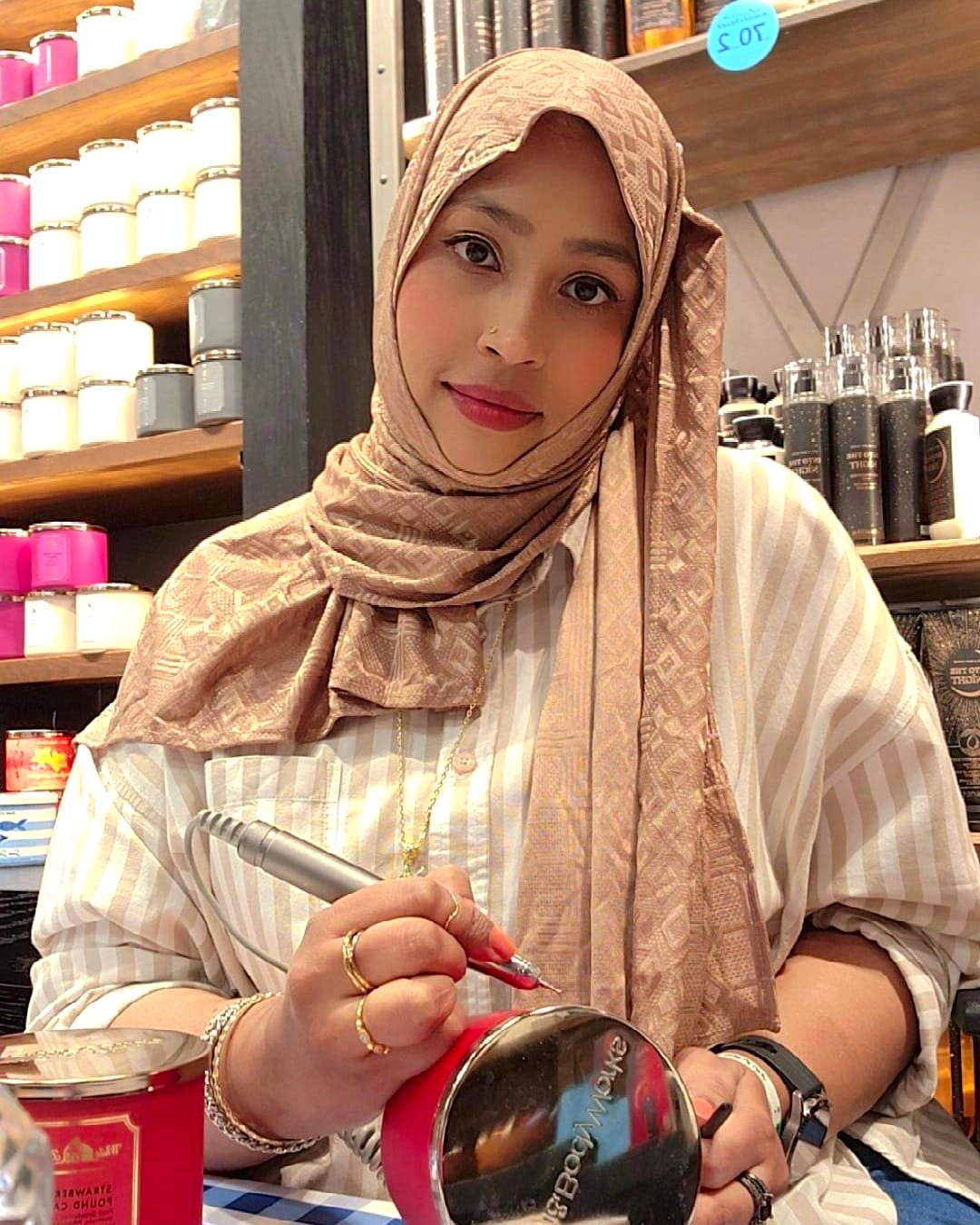
Her surroundings have played a major role in shaping her artistry. Influenced by the geometric patterns and intricate motifs of Islamic art, as well as the richness of Arabian culture, Kulsoom’s work reflects a deep connection to her environment in Saudi Arabia. At the same time, her Indian heritage adds another layer of cultural depth to her art, creating a dynamic and unique fusion of East and Middle Eastern aesthetics.
Navigating the local art scene as an expat wasn’t always easy. There were challenges in finding the right platforms and opportunities to share her work. However, she also found support and encouragement from artistic communities and cultural institutions. In particular, the Indian Embassy in Riyadh has been instrumental in promoting Indian artists through exhibitions and events. Her recent participation in Riyadh Art Week was a significant milestone—an affirmation of the hard work and passion she has poured into her craft.
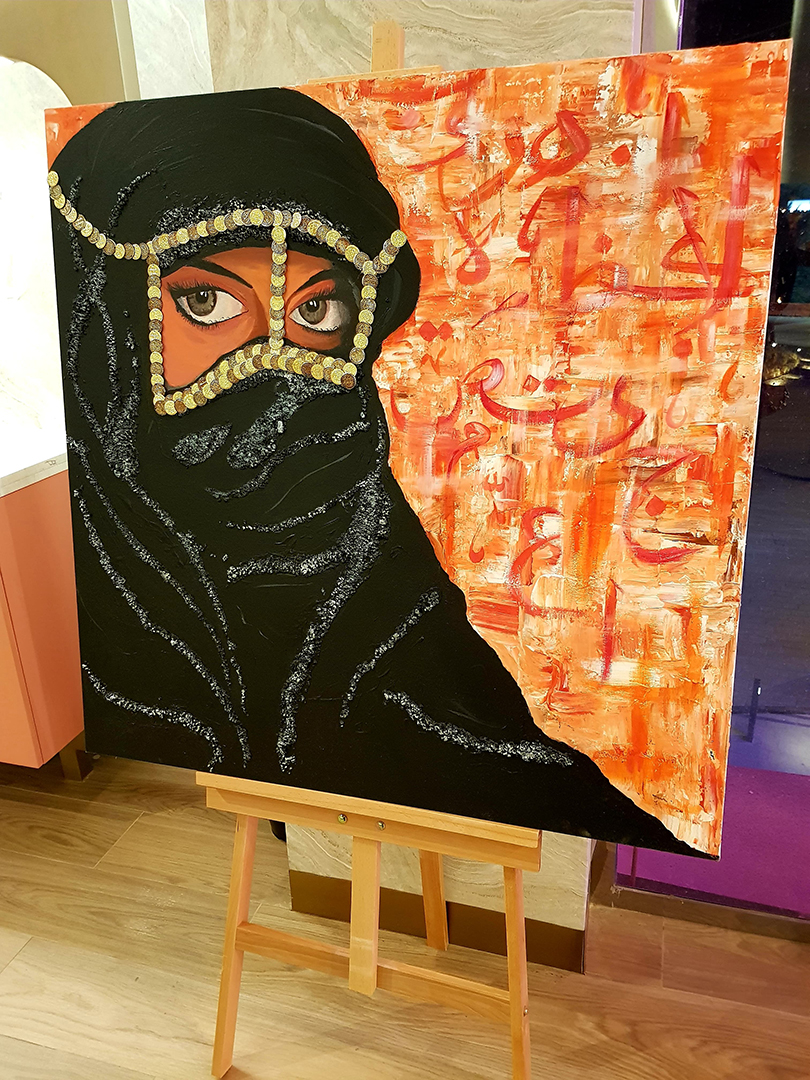
Kulsoom also took the initiative to build a creative circle. She founded RiyArtisans, a community of fellow artists in Riyadh who share updates on exhibits, art fairs, workshops, and meetups. Together, they continue to inspire and uplift one another. Her collaborations with brands have further expanded her reach, and one of her most meaningful artworks—a portrait of an Arabian woman in a traditional niqab—stands as a testament to her personal and artistic journey in the Kingdom.
To aspiring expat artists, Kulsoom’s advice is simple but powerful: stay active on social media, look out for gallery open calls, and attend local workshops and exhibits. The art scene in Saudi Arabia is evolving, and there are growing opportunities for creatives from all backgrounds to thrive. For Kulsoom, being an artist in the Kingdom has been both challenging and immensely rewarding—and she continues to grow with every brushstroke.
Leslie Ann Fiestan
Philippines
For Leslie Ann Fiestan, art has been a lifelong passion. Growing up in a family of creatives and crafters, she was naturally drawn to artistic pursuits from a young age. Her work spans mixed media, contemporary, and traditional painting, with a particular focus on portraiture—her favorite subject. While she enjoys experimenting with different media, she is currently drawn to the expressive qualities of watercolor and pastels.
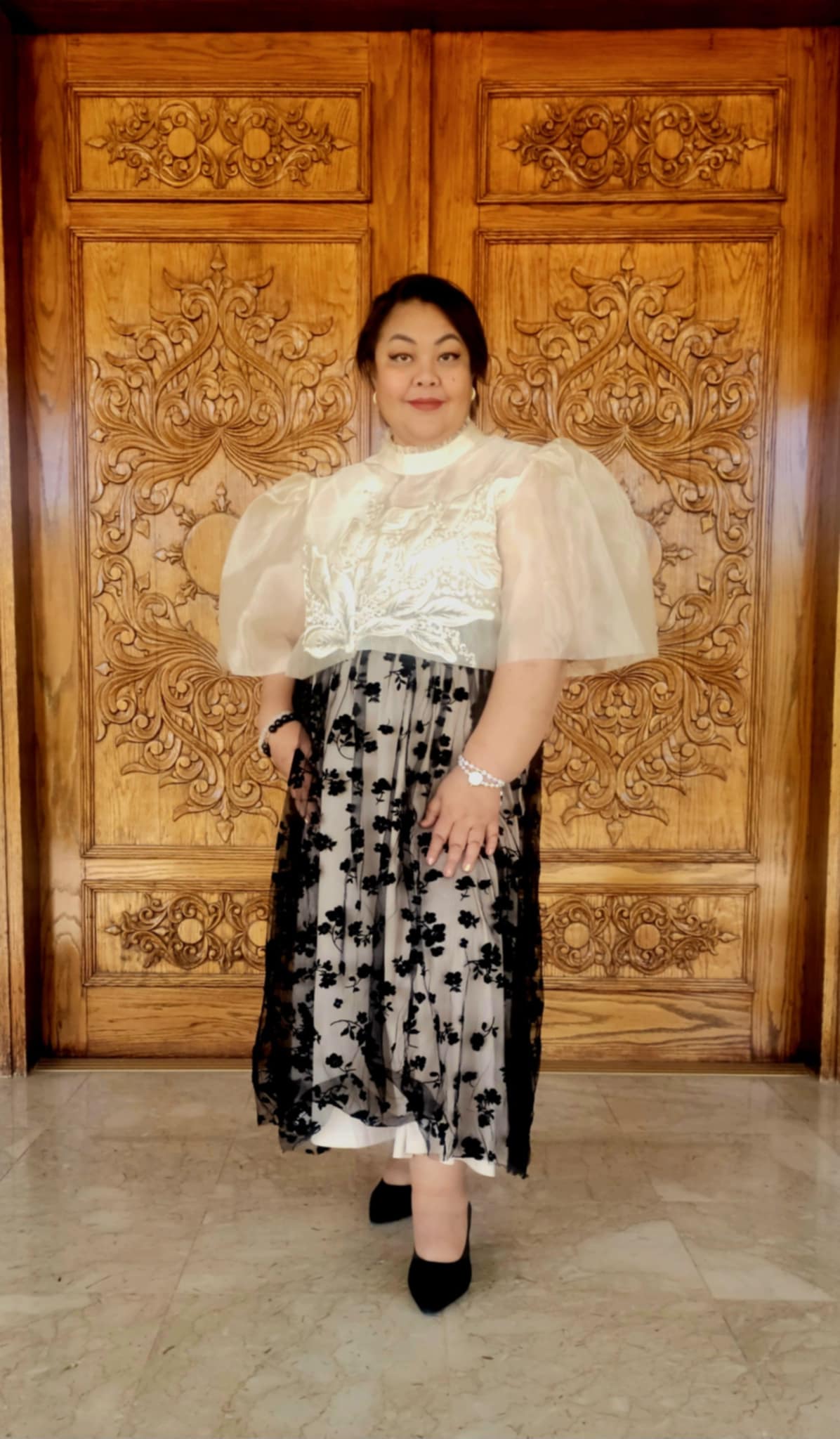
Having spent most of her life in Saudi Arabia, Leslie’s art often reflects a fusion of Saudi and Filipino cultural elements. She believes that an artist’s environment and cultural background play a vital role in shaping their creative voice, and she often incorporates these influences into her work.
One of her earlier pieces, Filipino sa Gitnang Silangan (Filipinos in the Middle East), was exhibited and sold at Naila Art Gallery. The piece features text in Alibata, the ancient Filipino script, and depicts a Filipino farmer’s hat (salakot) passing through doors adorned with traditional Aseer region patterns. A replica of this artwork now hangs proudly at the entrance of the Philippine ambassador’s office in the Diplomatic Quarter.
Leslie’s curiosity and love for learning extend beyond her own cultural roots. She enjoys exploring and incorporating techniques from other countries and traditions, finding inspiration in the diversity of global art practices. This openness adds depth and uniqueness to her creative output.

Being an expat artist in Saudi Arabia came with challenges in the past—particularly when exhibitions in art galleries were limited to Saudi nationals. However, the local art scene has evolved significantly in recent years, with more galleries now welcoming expatriate artists. Leslie also finds strong support from the Philippine Embassy in Riyadh, which actively promotes Filipino artists through their events. In 2022, she spearheaded Kulay Pinay, an all-Filipina art exhibit hosted by the embassy.
Today, the Filipino art community in Saudi Arabia continues to grow, with groups like Kulay Pinay, Hagod, and Brochas offering camaraderie and support to Filipino creatives.
Leslie’s advice to fellow expat artists in the Kingdom is simple yet powerful: Be bold and don’t hide. Show your art to the world. If you have a creative hobby, ask around in your community or explore social media to find groups and resources. Support and inspiration are out there—you just have to seek them.
Pablo Moura Letts
Peru
Originally from Peru, with a background in engineering and years spent in the mining industry, Pablo Moura Letts’ journey into the arts may seem unconventional. Yet working with materials through a scientific lens laid the foundation for his artistic practice. Years behind a desk sparked a deep craving for physical, creative expression—something tangible and hands-on. That longing eventually led him to leave his corporate path and begin anew as an artist.
In 2011, Pablo moved to New York City to study photography at the International Center of Photography. There, he fell in love with analog processes, drawn to the tactile, immersive quality of traditional photography. Exploring the material aspects of image-making allowed him to connect more deeply with his sense of expression.
A few years later, life took him to Berlin, where his creative focus shifted from two-dimensional imagery to three-dimensional forms. He discovered clay and porcelain—materials that allowed him to engage with volume, form, and imperfection. This was a natural evolution; his interest in texture, composition, and the physicality of process transitioned seamlessly into ceramics. He now runs his own studio, Diablo Atelier, where he both creates and teaches, continuing to explore the expressive language of clay.
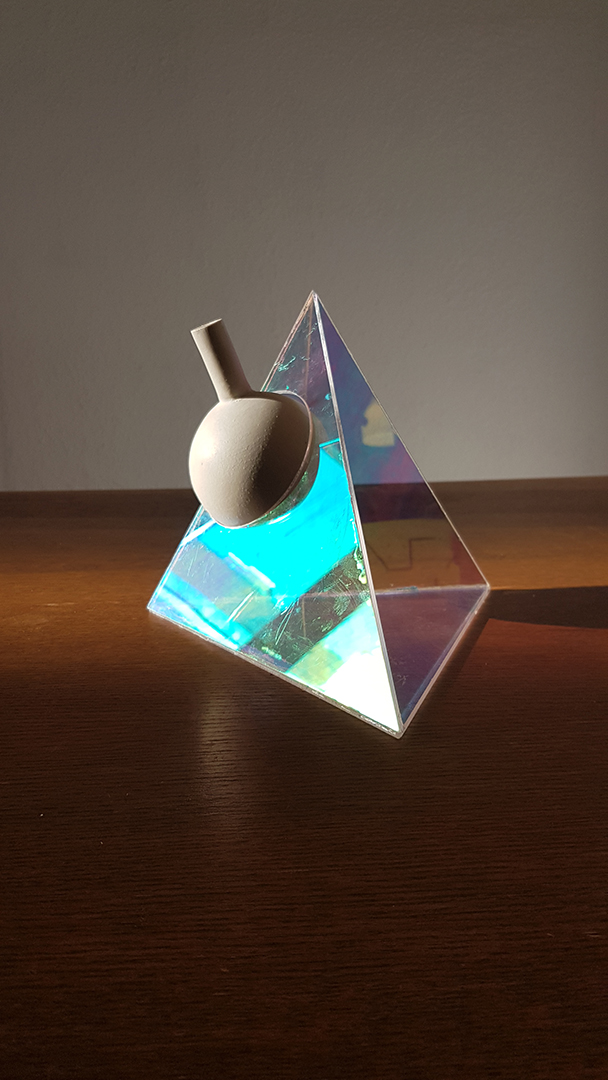
Pablo’s work centers on materiality and process. Even during his photography years, he was drawn to surfaces and depth, resisting the limitations of the flat image. Clay offered new dimensions—both literal and conceptual—enabling him to craft quiet, contemplative pieces that capture the essence of everyday objects. Imperfection, experimentation, and the natural behavior of materials guide his approach. Each piece is an object of presence, grounded in both memory and place.
Over the last fifteen years, Pablo has lived in several countries, and this movement has profoundly shaped his artistic identity. Rather than compartmentalize his influences, he allows them to merge organically. His work reflects a layered dialogue between his Peruvian roots and the cultures he encounters, resulting in a distinctive, evolving aesthetic grounded in material exploration.
He recently relocated to Riyadh, Saudi Arabia. Though he has only been there a few months, the textures, architecture, and visual rhythms of the city are already influencing his work. While still in the process of settling in—building his studio, connecting with local artists, and researching materials—he senses that this new environment will deeply shape his artistic direction.
Pablo is currently creating a piece inspired by Riyadh’s desert landscape and architecture—a work that couldn’t have been conceived anywhere else. As he continues to engage with the culture and creative community, he looks forward to the new forms and narratives that will emerge. Now, most of his practice go through his artist and ceramic studio, Diablo Atelier.
To fellow expat artists, he advises approaching the experience with openness and patience. Immerse yourself in the culture and environment—they offer rich inspiration. Build relationships with local artists and institutions, and seek support from embassies and cultural organizations. While the journey may be challenging, it offers powerful opportunities for creative growth.

